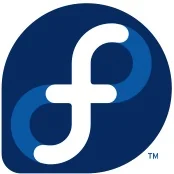Fedora 11 Release Schedule, Along With Five Features

The five features that are marked to be introduced in Fedora 11 include DeviceKit integration, improved volume controls, Windows cross-compiler support, Presto plug-in integration, and simple support for setting up a multi-seat system.
DeviceKit is a system -- still actively in development -- that can enumerate devices, create signals when certain devices are added or removed, provides the ability to merge device information / quirks onto the devices, and is able to replace some areas of HAL. DeviceKit has components to track disk devices as well as power management that would otherwise be dependent upon HAL. As part of this Fedora feature, GNOME's file manager will gain an extension that allows formatting disk partitions within Nautilus. The graphical front-end for DeviceKit is called palimpsest and provides several nice management capabilities. More information on the Fedora DeviceKit feature is available on the Fedora Project Wiki.
PulseAudio had appeared in Fedora 8 as the default sound server. Now since that's out of the way, Fedora 11 will hopefully make managing audio volumes easier. To address this, Fedora will be restricting the graphical mixers to modifying PulseAudio's default output mixer, make the control-center react to hardware hot-plugging of audio devices, perform basic microphone checking, allow tweaking of multi-input/output policies, and turning the mixer applet into a status icon. More on this work can be read about on its Wiki page.
Thanks to the work of the Fedora MinGW project, starting with Fedora 11 it should be possible to cross-compile Windows applications on Linux. Fedora MinGW provides development tools and libraries in a cross-compiler environment so that from your Linux desktop you can be producing Windows binaries. Of course, this is a feature mostly targeted at developers and not desktop users. Read about it here.
The Presto plug-in for Yum adds in support for delta RPM files. Including this plug-in by default will mean that it takes up much less bandwidth (and time) when installing Fedora updates since the Fedora Bodhi process will also be generating the delta RPMs so that full RPMs don't need to be downloaded simply when a program is updated. For more information, check-out the Presto page.
The fifth and final feature that received clearance from FESCo yesterday was multi-seat support. Multi-seat support, of course, makes it possible for multiple monitors, keyboards, and mice to be connected to a single host system that multiple people can then use simultaneously. This isn't to be confused with Multi-Pointer X that allows for multiple input devices but through a single seat. To provide the multi-seat support, Fedora 11 will include the Multi-Display Manager (MDM), ConsoleKit changes to better support multiple seats, and changes to the X Server to better support multi-seat computing. This feature proposal is described here.
FESCo also approved the Fedora 11 release schedule that was proposed by the release engineers. The alpha release of Fedora 11 is scheduled to occur on January 27, the beta release on March 10, the preview release on April 28, and the final release of Fedora 11 on May 26, 2009. Of course, this is permitting there aren't any delays or other unexpected problems arising. The proposed schedule can be viewed here. Expect more features to appear in Fedora 11 as the development cycle moves forward.
3 Comments

